Refine listing
Actions for selected content:
1437 results in Ebooks in machine learning
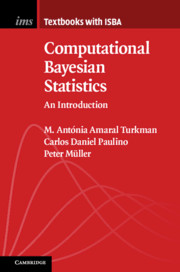
Computational Bayesian Statistics
- An Introduction
-
- Published online:
- 18 February 2019
- Print publication:
- 28 February 2019
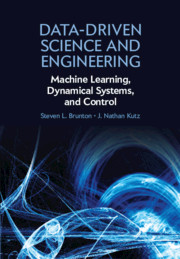
Data-Driven Science and Engineering
- Machine Learning, Dynamical Systems, and Control
-
- Published online:
- 15 February 2019
- Print publication:
- 28 February 2019
-
- Book
- Export citation
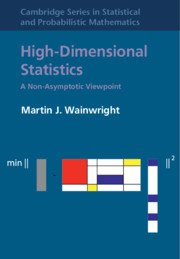
High-Dimensional Statistics
- A Non-Asymptotic Viewpoint
-
- Published online:
- 12 February 2019
- Print publication:
- 21 February 2019
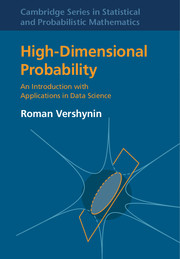
High-Dimensional Probability
- An Introduction with Applications in Data Science
-
- Published online:
- 29 September 2018
- Print publication:
- 27 September 2018
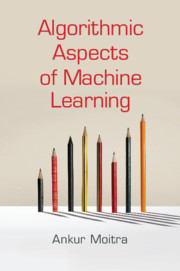
Algorithmic Aspects of Machine Learning
-
- Published online:
- 28 September 2018
- Print publication:
- 27 September 2018
Index
-
- Book:
- Algorithmic Aspects of Machine Learning
- Published online:
- 28 September 2018
- Print publication:
- 27 September 2018, pp 150-152
-
- Chapter
- Export citation
frontmatter
-
- Book:
- Geometric and Topological Inference
- Published online:
- 14 September 2018
- Print publication:
- 27 September 2018, pp i-iv
-
- Chapter
- Export citation
2 - Simplicial Complexes
- from Part I - Topological Preliminaries
-
- Book:
- Geometric and Topological Inference
- Published online:
- 14 September 2018
- Print publication:
- 27 September 2018, pp 10-20
-
- Chapter
- Export citation
Preface
-
- Book:
- High-Dimensional Probability
- Published online:
- 29 September 2018
- Print publication:
- 27 September 2018, pp xiii-xiv
-
- Chapter
- Export citation
Preface
-
- Book:
- Algorithmic Aspects of Machine Learning
- Published online:
- 28 September 2018
- Print publication:
- 27 September 2018, pp vii-viii
-
- Chapter
- Export citation
Bibliography
-
- Book:
- Algorithmic Aspects of Machine Learning
- Published online:
- 28 September 2018
- Print publication:
- 27 September 2018, pp 143-149
-
- Chapter
- Export citation
1 - Topological Spaces
- from Part I - Topological Preliminaries
-
- Book:
- Geometric and Topological Inference
- Published online:
- 14 September 2018
- Print publication:
- 27 September 2018, pp 3-9
-
- Chapter
-
- You have access
- Export citation
8 - Reconstruction of Submanifolds
- from Part III - Reconstruction of Smooth Submanifolds
-
- Book:
- Geometric and Topological Inference
- Published online:
- 14 September 2018
- Print publication:
- 27 September 2018, pp 137-160
-
- Chapter
- Export citation
6 - Quadratic Forms, Symmetrization, and Contraction
-
- Book:
- High-Dimensional Probability
- Published online:
- 29 September 2018
- Print publication:
- 27 September 2018, pp 127-146
-
- Chapter
- Export citation
2 - Concentration of Sums of Independent Random Variables
-
- Book:
- High-Dimensional Probability
- Published online:
- 29 September 2018
- Print publication:
- 27 September 2018, pp 11-37
-
- Chapter
- Export citation
References
-
- Book:
- High-Dimensional Probability
- Published online:
- 29 September 2018
- Print publication:
- 27 September 2018, pp 272-280
-
- Chapter
- Export citation
3 - Tensor Decompositions: Algorithms
-
- Book:
- Algorithmic Aspects of Machine Learning
- Published online:
- 28 September 2018
- Print publication:
- 27 September 2018, pp 29-47
-
- Chapter
- Export citation
6 - Delaunay Filtrations
- from Part II - Delaunay Complexes
-
- Book:
- Geometric and Topological Inference
- Published online:
- 14 September 2018
- Print publication:
- 27 September 2018, pp 98-112
-
- Chapter
- Export citation
Frontmatter
-
- Book:
- High-Dimensional Probability
- Published online:
- 29 September 2018
- Print publication:
- 27 September 2018, pp i-ii
-
- Chapter
- Export citation
Part I - Topological Preliminaries
-
- Book:
- Geometric and Topological Inference
- Published online:
- 14 September 2018
- Print publication:
- 27 September 2018, pp 1-2
-
- Chapter
- Export citation
